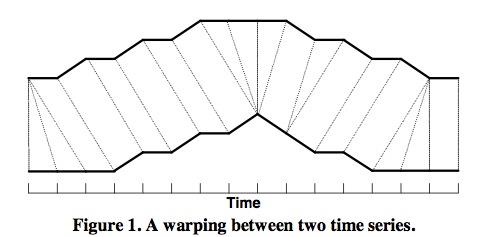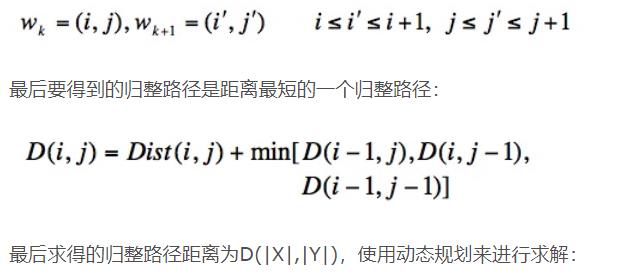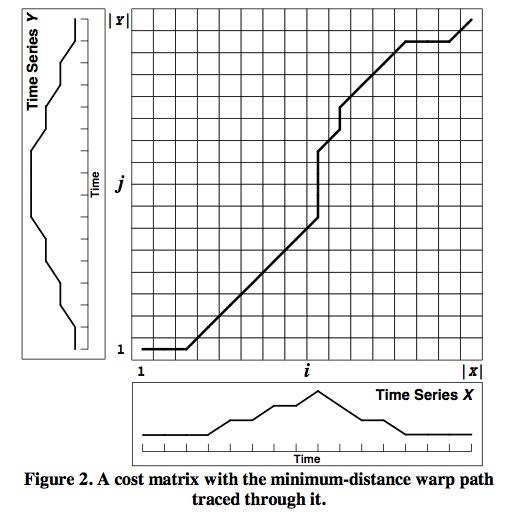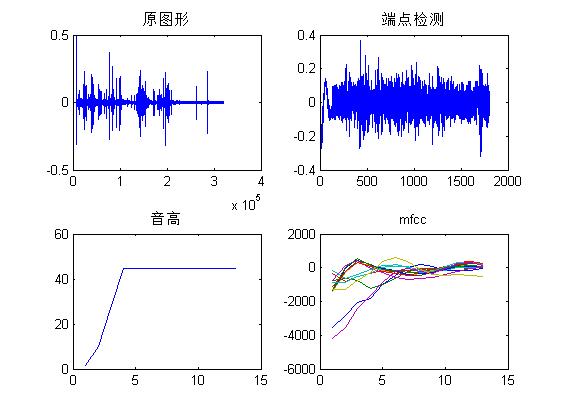求高人指点matlab语音端点检测程序
Posted
tags:
篇首语:本文由小常识网(cha138.com)小编为大家整理,主要介绍了求高人指点matlab语音端点检测程序相关的知识,希望对你有一定的参考价值。
function [x1,x2] = vad(x)
%幅度归一化到[-1,1]
x = double(x);
x = x / max(abs(x));
%常数设置
FrameLen = 240;%指定帧长
FrameInc = 80;%指定帧移
amp1 = 10;
amp2 = 2;
zcr1 = 10;
zcr2 = 5;
maxsilence = 8; % 6*10ms = 30ms
minlen = 15; % 15*10ms = 150ms
status = 0;
count = 0;
silence = 0;
%计算过零率
tmp1 = enframe(x(1:end-1), FrameLen, FrameInc);%分帧处理,tmp1和tmp2为分帧后形成的二维数组
tmp2 = enframe(x(2:end) , FrameLen, FrameInc);
signs = (tmp1.*tmp2)<0;
diffs = (tmp1 -tmp2)>0.02;
zcr = sum(signs.*diffs, 2);
%计算短时能量
amp = sum(abs(enframe(filter([1 -0.9375], 1, x), FrameLen, FrameInc)), 2);
%调整能量门限
amp1 = min(amp1, max(amp)/4);
amp2 = min(amp2, max(amp)/8);
%开始端点检测
x1 = [];
x2 = [];
for n=1:length(zcr)
goto = 0;
switch status
case 0,1 % 0 = 静音, 1 = 可能开始
if amp(n) > amp1 % 确信进入语音段
x1(end+1) = max(n-count-1,1);
status = 2;
silence = 0;
count = count + 1;
elseif amp(n) > amp2 | ... % 可能处于语音段
zcr(n) > zcr2
status = 1;
count = count + 1;
else % 静音状态
status = 0;
count = 0;
if length(x1)~=length(x2)
x2(end+1)=x1(end)+count-silence/2-1;
end
end
case 2, % 2 = 语音段
if amp(n) > amp2 | ... % 保持在语音段
zcr(n) > zcr2
count = count + 1;
else % 语音将结束
silence = silence+1;
if silence < maxsilence % 静音还不够长,尚未结束
count = count + 1;
elseif count < minlen % 语音长度太短,认为是噪声
status = 0;
silence = 0;
count = 0;
else % 语音结束
status = 3;
end
end
case 3,
status=0;
x2(end+1)=x1(end)+count-silence/2-1;
end
end
% count = count-silence/2;
% v_count(i)=v_count(i)+v_count(i-1);
% v_silence(i)=v_count(i)+v_silence(i);
if length(x2)<length(x1)
x2(end+1)=length(zcr);
end
subplot(311)
plot(x)
axis([1 length(x) -1 1])
ylabel('Speech');
for i=1:length(x2);
line([x1(i)*FrameInc x1(i)*FrameInc], [-1 1], 'Color', 'red');
line([x2(i)*FrameInc x2(i)*FrameInc], [-1 1], 'Color', 'green');
end
% line([x1*FrameInc x1*FrameInc], [-1 1], 'Color', 'red');
% line([x2*FrameInc x2*FrameInc], [-1 1], 'Color', 'red');
subplot(312)
plot(amp);
axis([1 length(amp) 0 max(amp)])
ylabel('Energy');
for i=1:length(x2);
line([x1(i) x1(i)], [min(amp),max(amp)], 'Color', 'red');
line([x2(i) x2(i)], [min(amp),max(amp)], 'Color', 'green');
end
subplot(313)
plot(zcr);
axis([1 length(zcr) 0 max(zcr)])
ylabel('ZCR');
for i=1:length(x2);
line([x1(i) x1(i)], [min(zcr),max(zcr)], 'Color', 'red');
line([x2(i) x2(i)], [min(zcr),max(zcr)], 'Color', 'green');
end
具体怎么在matlab上运行
%% 该代码为基于带动量项的BP神经网络语音识别
%% 清空环境变量
clc
clear
%% 训练数据预测数据提取及归一化
%下载四类语音信号
load data1 c1
load data2 c2
load data3 c3
load data4 c4
%四个特征信号矩阵合成一个矩阵
data(1:500,:)=c1(1:500,:);
data(501:1000,:)=c2(1:500,:);
data(1001:1500,:)=c3(1:500,:);
data(1501:2000,:)=c4(1:500,:);
%从1到2000间随机排序
k=rand(1,2000);
[m,n]=sort(k);
%输入输出数据
input=data(:,2:25);
output1 =data(:,1);
%把输出从1维变成4维
for i=1:2000
switch output1(i)
case 1
output(i,:)=[1 0 0 0];
case 2
output(i,:)=[0 1 0 0];
case 3
output(i,:)=[0 0 1 0];
case 4
output(i,:)=[0 0 0 1];
end
end
%随机提取1500个样本为训练样本,500个样本为预测样本
input_train=input(n(1:1500),:)';
output_train=output(n(1:1500),:)';
input_test=input(n(1501:2000),:)';
output_test=output(n(1501:2000),:)';
%输入数据归一化
[inputn,inputps]=mapminmax(input_train);
%% 网络结构初始化
innum=24;
midnum=25;
outnum=4;
%权值初始化
w1=rands(midnum,innum);
b1=rands(midnum,1);
w2=rands(midnum,outnum);
b2=rands(outnum,1);
w2_1=w2;w2_2=w2_1;
w1_1=w1;w1_2=w1_1;
b1_1=b1;b1_2=b1_1;
b2_1=b2;b2_2=b2_1;
%学习率
xite=0.1
alfa=0.01;
%% 网络训练
for ii=1:10
E(ii)=0;
for i=1:1:1500
%% 网络预测输出
x=inputn(:,i);
% 隐含层输出
for j=1:1:midnum
I(j)=inputn(:,i)'*w1(j,:)'+b1(j);
Iout(j)=1/(1+exp(-I(j)));
end
% 输出层输出
yn=w2'*Iout'+b2;
%% 权值阀值修正
%计算误差
e=output_train(:,i)-yn;
E(ii)=E(ii)+sum(abs(e));
%计算权值变化率
dw2=e*Iout;
db2=e';
for j=1:1:midnum
S=1/(1+exp(-I(j)));
FI(j)=S*(1-S);
end
for k=1:1:innum
for j=1:1:midnum
dw1(k,j)=FI(j)*x(k)*(e(1)*w2(j,1)+e(2)*w2(j,2)+e(3)*w2(j,3)+e(4)*w2(j,4));
db1(j)=FI(j)*(e(1)*w2(j,1)+e(2)*w2(j,2)+e(3)*w2(j,3)+e(4)*w2(j,4));
end
end
w1=w1_1+xite*dw1'+alfa*(w1_1-w1_2);
b1=b1_1+xite*db1'+alfa*(b1_1-b1_2);
w2=w2_1+xite*dw2'+alfa*(w2_1-w2_2);
b2=b2_1+xite*db2'+alfa*(b2_1-b2_2);
w1_2=w1_1;w1_1=w1;
w2_2=w2_1;w2_1=w2;
b1_2=b1_1;b1_1=b1;
b2_2=b2_1;b2_1=b2;
end
end
%% 语音特征信号分类
inputn_test=mapminmax('apply',input_test,inputps);
for ii=1:1
for i=1:500%1500
%隐含层输出
for j=1:1:midnum
I(j)=inputn_test(:,i)'*w1(j,:)'+b1(j);
Iout(j)=1/(1+exp(-I(j)));
end
fore(:,i)=w2'*Iout'+b2;
end
end
%% 结果分析
%根据网络输出找出数据属于哪类
for i=1:500
output_fore(i)=find(fore(:,i)==max(fore(:,i)));
end
%BP网络预测误差
error=output_fore-output1(n(1501:2000))';
%画出预测语音种类和实际语音种类的分类图
figure(1)
plot(output_fore,'r')
hold on
plot(output1(n(1501:2000))','b')
legend('预测语音类别','实际语音类别')
%画出误差图
figure(2)
plot(error)
title('BP网络分类误差','fontsize',12)
xlabel('语音信号','fontsize',12)
ylabel('分类误差','fontsize',12)
%print -dtiff -r600 1-4
k=zeros(1,4);
%找出判断错误的分类属于哪一类
for i=1:500
if error(i)~=0
[b,c]=max(output_test(:,i));
switch c
case 1
k(1)=k(1)+1;
case 2
k(2)=k(2)+1;
case 3
k(3)=k(3)+1;
case 4
k(4)=k(4)+1;
end
end
end
%找出每类的个体和
kk=zeros(1,4);
for i=1:500
[b,c]=max(output_test(:,i));
switch c
case 1
kk(1)=kk(1)+1;
case 2
kk(2)=kk(2)+1;
case 3
kk(3)=kk(3)+1;
case 4
kk(4)=kk(4)+1;
end
end
%正确率
rightridio=(kk-k)./kk追问
我的是语音端点检测,从论坛上找的都是这个程序,想知道具体怎么在matlab上运行
参考技术A 将上面的代码保存为vad.m文件,然后再命令窗口中调用。如:[x,fs]=wavread('E:\a007.wav');
[x1,x2] = vad(x);
语音识别基于matlab语音分帧+端点检测+pitch提取+DTW算法歌曲识别含Matlab源码 1057期
一、简介
Dynamic Time Warping(DTW)诞生有一定的历史了(日本学者Itakura提出),它出现的目的也比较单纯,是一种衡量两个长度不同的时间序列的相似度的方法。应用也比较广,主要是在模板匹配中,比如说用在孤立词语音识别(识别两段语音是否表示同一个单词),手势识别,数据挖掘和信息检索等中。
1 概述
在大部分的学科中,时间序列是数据的一种常见表示形式。对于时间序列处理来说,一个普遍的任务就是比较两个序列的相似性。
在时间序列中,需要比较相似性的两段时间序列的长度可能并不相等,在语音识别领域表现为不同人的语速不同。因为语音信号具有相当大的随机性,即使同一个人在不同时刻发同一个音,也不可能具有完全的时间长度。而且同一个单词内的不同音素的发音速度也不同,比如有的人会把“A”这个音拖得很长,或者把“i”发的很短。在这些复杂情况下,使用传统的欧几里得距离无法有效地求的两个时间序列之间的距离(或者相似性)。
2 DTW方法原理
在时间序列中,需要比较相似性的两段时间序列的长度可能并不相等,在语音识别领域表现为不同人的语速不同。而且同一个单词内的不同音素的发音速度也不同,比如有的人会把“A”这个音拖得很长,或者把“i”发的很短。另外,不同时间序列可能仅仅存在时间轴上的位移,亦即在还原位移的情况下,两个时间序列是一致的。在这些复杂情况下,使用传统的欧几里得距离无法有效地求的两个时间序列之间的距离(或者相似性)。
DTW通过把时间序列进行延伸和缩短,来计算两个时间序列性之间的相似性:

如上图所示,上下两条实线代表两个时间序列,时间序列之间的虚线代表两个时间序列之间的相似的点。DTW使用所有这些相似点之间的距离的和,称之为归整路径距离(Warp Path Distance)来衡量两个时间序列之间的相似性。
2 DTW计算方法:
令要计算相似度的两个时间序列为X和Y,长度分别为|X|和|Y|。
归整路径(Warp Path)
归整路径的形式为W=w1,w2,…,wK,其中Max(|X|,|Y|)<=K<=|X|+|Y|。
wk的形式为(i,j),其中i表示的是X中的i坐标,j表示的是Y中的j坐标。
归整路径W必须从w1=(1,1)开始,到wK=(|X|,|Y|)结尾,以保证X和Y中的每个坐标都在W中出现。
另外,W中w(i,j)的i和j必须是单调增加的,以保证图1中的虚线不会相交,所谓单调增加是指:


上图为代价矩阵(Cost Matrix) D,D(i,j)表示长度为i和j的两个时间序列之间的归整路径距离。
二、源代码
clc;
clear;
close all;
waveFile = sprintf('同桌的你.wav');% 同桌的你 女儿情 回梦游仙 滴答 彩虹
% 读取波形---端点检测---切音框
waveFile='同桌的你.wav';
pivFile = sprintf('同桌的你.piv');
pivFile=['mfcc' pivFile];
[y,fs]=audioread(waveFile); %读取原文件
figure
subplot(221)
plot(y);
title('原图形');
frame = PointDetect(waveFile); %端点检测
subplot(222)
plot(frame);
title('端点检测');
subplot(223)
pitch=wave2pitch(frame,fs); %计算音高
plot(pitch);
title('音高');
function [pitch, pdf, frameEstimated, excitation]=frame2pitch(frame, opt, showPlot)
% frame2acf: PDF (periodicity detection function) of a given frame (primarily for pitch tracking)
%
% Usage:
% out=frame2pdf(frame, opt, showPlot);
% frame: Given frame
% opt: Options for PDF computation
% opt.pdf: PDF function to be used
% 'acf' for ACF
% 'amdf' for AMDF
% 'nsdf' for NSDF
% 'acfOverAmdf' for ACF divided by AMDF
% 'hps' for harmonics product sum
% 'ceps' for cepstrum
% opt.maxShift: no. of shift operations, which is equal to the length of the output vector
% opt.method: 1 for using the whole frame for shifting
% 2 for using the whole frame for shifting, but normalize the sum by it's overlap area
% 3 for using frame(1:frameSize-maxShift) for shifting
% opt.siftOrder: order of SIFT (0 for not using SIFT)
% showPlot: 0 for no plot, 1 for plotting the frame and ACF output
% out: the returned PDF vector
%
% Example:
% waveFile='soo.wav';
% au=myAudioRead(waveFile);
% frameSize=256;
% frameMat=enframe(au.signal, frameSize);
% frame=frameMat(:, 292);
% opt=ptOptSet(au.fs, au.nbits, 1);
% opt.alpha=0;
% pitch=frame2pitch(frame, opt, 1);
%
% See also frame2acf, frame2amdf, frame2nsdf.
% Roger Jang 20020404, 20041013, 20060313
if nargin<1, selfdemo; return; end
if nargin<2||isempty(opt), opt=ptOptSet(8000, 16, 1); end
if nargin<3, showPlot=0; end
%% ====== Preprocessing
%save frame frame
frame=frameZeroMean(frame, opt.zeroMeanPolyOrder);
%frame=frameZeroMean(frame, 0);
frameEstimated=[];
excitation=[];
if opt.siftOrder>0
[frameEstimated, excitation, coef]=sift(frame, opt.siftOrder); % Simple inverse filtering tracking
frame=excitation;
end
frameSize=length(frame);
maxShift=min(frameSize, opt.maxShift);
switch lower(opt.pdf)
case 'acf'
% pdf=frame2acf(frame, maxShift, opt.method);
pdf=frame2acfMex(frame, maxShift, opt.method);
% if opt.method==1
% pdfWeight=1+linspace(0, opt.alpha, length(pdf))';
% pdf=pdf.*pdfWeight; % To avoid double pitch error (esp for violin). 20110416
% end
% if opt.method==2
% pdfWeight=1-linspace(0, opt.alpha, length(pdf))'; % alpha is less than 1.
% pdf=pdf.*pdfWeight; % To avoid double pitch error (esp for violin). 20110416
% end
pdfLen=length(pdf);
pdfWeight=opt.alpha+pdfLen*(1-opt.alpha)./(pdfLen-(0:pdfLen-1)');
pdf=pdf.*pdfWeight; % alpha=0==>normalized ACF, alpha=1==>tapering ACF
case 'amdf'
% amdf=frame2amdf(frame, maxShift, opt.method);
amdf=frame2amdfMex(frame, maxShift, opt.method);
pdf=max(amdf)*(1-linspace(0,1,length(amdf))')-amdf;
case 'nsdf'
% pdf=frame2nsdf(frame, maxShift, opt.method);
pdf=frame2nsdfMex(frame, maxShift, opt.method);
case 'acfoveramdf'
opt.pdf='acf';
[acfPitch, acf] =feval(mfilename, frame, opt);
opt.pdf='amdf';
[amdfPitch, amdf]=feval(mfilename, frame, opt);
pdf=0*acf;
pdf(2:end)=acf(2:end)./amdf(2:end);
case 'hps'
[pdf, freq]=frame2hps(frame, opt.fs, opt.zeroPaddedFactor);
case 'ceps'
pdf=frame2ceps(frame, opt.fs, opt.zeroPaddedFactor);
otherwise
error('Unknown PDF=%s!', opt.pdf);
end
switch lower(opt.pdf)
case {'acf', 'amdf', 'nsdf', 'amdf4pt', 'acfoveramdf', 'ceps'}
n1=floor(opt.fs/opt.freqRange(2)); % pdf(1:n1) will not be used
n2= ceil(opt.fs/opt.freqRange(1)); % pdf(n2:end) will not be used
if n2>length(pdf), n2=length(pdf); end
% Update n1 such that pdf(n1)<=pdf(n1+1)
while n1<n2 & pdf(n1)>pdf(n1+1), n1=n1+1; end
% Update n2 such that pdf(n2)<=pdf(n2-1)
while n2>n1 & pdf(n2)>pdf(n2-1), n2=n2-1; end
pdf2=pdf;
pdf2(1:n1)=-inf;
pdf2(n2:end)=-inf;
[maxValue, maxIndex]=max(pdf2);
if isinf(maxValue) || maxIndex==n1+1 || maxIndex==n2-1
pitch=0; maxIndex=nan; maxValue=nan;
elseif opt.useParabolicFit
deviation=optimViaParabolicFit(pdf(maxIndex-1:maxIndex+1));
maxIndex=maxIndex+deviation;
pitch=freq2pitch(opt.fs/(maxIndex-1));
else
pitch=freq2pitch(opt.fs/(maxIndex-1));
end
case {'hps'}
pdf2=pdf;
pdf2(freq<opt.freqRange(1)|freq>opt.freqRange(2))=-inf;
[maxValue, maxIndex]=max(pdf2);
% if opt.useParabolicFit
% deviation=optimViaParabolicFit(pdf(maxIndex-1:maxIndex+1));
% maxIndex=maxIndex+deviation;
% end
pitch=freq2pitch(freq(maxIndex));
otherwise
error('Unknown PDF=%s!', opt.pdf);
end
if showPlot
subplot(2,1,1);
plot(frame, '.-');
set(gca, 'xlim', [-inf inf]);
title('Input frame');
subplot(2,1,2);
plot(1:length(pdf), pdf, '.-', 1:length(pdf2), pdf2, '.r');
line(maxIndex, maxValue, 'marker', '^', 'color', 'k');
set(gca, 'xlim', [-inf inf]);
title(sprintf('%s vector (opt.method = %d)', opt.pdf, opt.method));
end
% ====== Self demo
function selfdemo
mObj=mFileParse(which(mfilename));
strEval(mObj.example);
三、运行结果

四、备注
版本:2014a
以上是关于求高人指点matlab语音端点检测程序的主要内容,如果未能解决你的问题,请参考以下文章